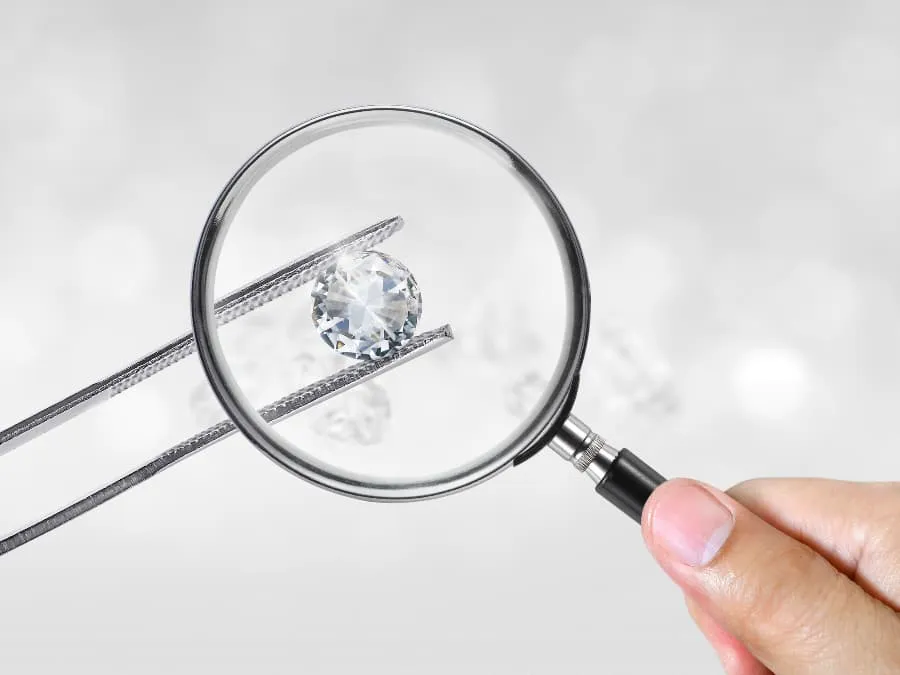
Diamond jewelry is a beautiful and timeless option for engagement rings, anniversary gifts, or a statement piece. Most modern jewelry contains either natural diamonds or lab-grown ones. If you’re looking to buy a diamond, you may be wondering what the difference is between them.
At Peter & Co. Jewelers in Avon Lake, Ohio, we offer a robust selection of natural and lab-grown diamonds. In this guide, we’ll provide an overview of lab-grown vs. natural diamonds, including their differences and similarities. We’ll also discuss how to tell the difference between the two.
What Is a Lab-Grown Diamond?
Lab-grown diamonds are real diamonds created in a controlled laboratory environment. Using advanced technology that replicates the natural conditions under which diamonds form in the Earth, these diamonds can be produced in a matter of weeks or months. The resulting stones are chemically, physically, and optically the same as natural diamonds—they exhibit the same sparkle, hardness, and brilliance. However, because their origin is man-made rather than geological, distinguishing between lab-grown and mined diamonds requires specialized equipment and trained gemological expertise.
There are two main types of lab-grown diamonds:
- High pressure high temperature (HPHT): This method simulates the natural conditions of diamonds forming in the Earth. Diamond seeds are placed in a chamber and blasted with intense heat and pressure. As a result, the carbon atoms bond with the seed, which crystallizes into a diamond.
- Chemical vapor deposition (CVD): A thin piece of diamond seed is placed in a vacuum chamber with a carbon-rich gas mixture. This mixture is heated to break down the gas molecules. As carbon atoms settle onto the seeds, diamond layers start to form. The diamond is kept in the chamber until it reaches the desired carats.
Both start as tiny carbon seeds from natural diamonds. Once a rough diamond is created, it is cut, polished, and set in jewelry.
Lab-Grown Diamonds vs. Natural Diamonds
While lab-grown diamonds have the same chemical structure and appearance as natural diamonds, there are several differences between the two. They include:
- Creation: Natural diamonds form over billions of years inside the Earth. Lab-grown diamonds are formed inside a lab over months or weeks.
- Price: Natural diamonds are valued for their rarity, which contributes to their higher price. Lab-grown diamonds, on the other hand, are more affordable because they can be produced on demand using controlled technology.
- Durability: Both lab-grown and natural diamonds are ranked a 10 on the Mohs hardness scale. They are resistant to chipping and scratching, making them ideal for everyday wear. With proper care, they can both last a lifetime.
- Clarity: Both natural and lab-grown diamonds are graded on the same scale of cut, color, clarity, and carat. Since both types of diamonds are grown, there is no difference in the look of each type. However, when it comes to value, these characteristics and their corresponding rarity have a significantly greater impact on natural diamonds due to their rarity and market demand
- Color: Lab-grown and natural diamonds are primarily colorless. But they also occur in other color options. Lab-grown diamonds are often more vivid than natural options.
- Source: Lab-grown diamonds are created in controlled environments, making their origin fully traceable. Natural diamonds, formed over billions of years beneath the Earth's surface, are now more ethically sourced than ever thanks to industry-wide transparency initiatives and responsible mining practices. Both options offer paths to ownership with values rooted in integrity, whether through traceable technology or improved mining standards.
How to Tell the Difference Between Lab-Grown and Natural Diamonds
Lab-grown and natural diamonds share the same physical, chemical, and optical properties, which makes them visually identical to the naked eye. Distinguishing between the two requires advanced gemological tools and the expertise of a trained professional, as the differences lie in their origin and subtle growth features, not in their appearance.
These subtleties include the following:
- Inclusions: Lab diamonds may contain metallic inclusions related to the CVD or HPHT production process. Natural diamonds have inclusions from other natural minerals found in the Earth’s mantle. These internal characteristics are unique to each diamond and can help gemologists determine its origin.
- Growth patterns: Natural diamonds feature an octahedral growth pattern. Lab diamonds may have slightly differing growth patterns due to synthetic production.
- Laser inscription: Most lab diamonds are inscribed with a microscopic mark or serial number. This inscription helps identify a diamond’s source and is used for tracking.
- Identification: We use a specific diamond tester to determine origin. This device analyzes how a diamond reacts to specific light and thermal conditions. Lab-grown diamonds often display subtle optical or conductive differences, allowing the tester to distinguish them from natural diamonds with high accuracy.
Find Timeless Jewelry at Peter & Co. Jewelers
Whether you’re drawn to the timeless rarity of a natural diamond or the modern innovation of a lab-grown option, both are meaningful ways to celebrate love. At Peter & Co. Jewelers, we carefully select each diamond for its beauty, clarity, and brilliance, ensuring every piece of jewelry, including rings and necklaces, meets our high standards for quality and craftsmanship. If you’re searching for a timeless piece of jewelry, you’ll find what you’re looking for at our Avon Lake store.
Our family-owned jewelry store has served the Cleveland, Ohio, area since 1987. We can guide you through the buying process, answer any questions you may have, and help with any repairs you need. To learn more about lab-grown diamonds vs. natural diamonds, contact us today.
